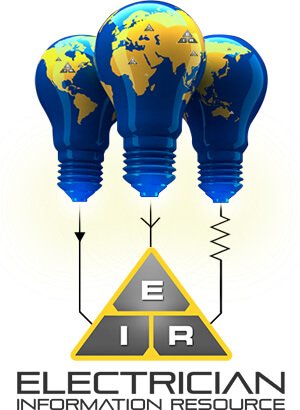Learn How DC Circuit Breakers Work
DC circuit breakers automatically shut off the power when a circuit is threatened of becoming overloaded. This protects the electrical circuit and all devices using the power from damage.
The breaker detects a fault and immediately interrupts the continuity in the electrical flow.
Unlike a fuse, which will blow out when it gets overloaded, a circuit breaker can be reset. In fact, the circuit breaker in your home cuts the electrical power before the fuse can burn out.
An electrical power bar for example has a built-in circuit breaker. When too many things are using the power from one source, it shuts off the power, thereby protecting the electrical devices plugged into the bar.
These are often used on desktop computers. A sudden power surge can destroy a CPU. A power bar with a built-in circuit breaker protects the CPU and everything else attached to the bar.
Some DC circuit breakers are designed to reset automatically, but most have to be reset manually. Once you flip the switch, operation continues as before. Except in the case of a computer, which has to be manually restarted. But any lights or appliances using the power from the overloaded circuit will come back on once the circuit breaker is reset.
However, since an overload caused the circuit breaker to kick in, some lights and appliances may have to be turned off before resetting the circuit breaker.
For example, if you are using a power drill and have a radio plugged into the same outlet, then decide to turn on a cooling fan, the circuit may become overloaded. One of the devices will have to be turned off before resetting the breaker.
The size of a DC circuit breaker depends on the size of the unit it is protecting. You can have a small device to protect individual appliances, such as the ones in power bars, all the way up to a large switchgear that can protect high voltage circuits feeding several neighbourhoods.
How Does Electricity Work?
An electron is a negatively charged particle that is pushed away from a negative charge towards a positive one. When electrons move through a conductor, such as a copper or aluminum wire, electricity is produced.
These are the properties that define an alternating current (AC) and a direct current (DC). Alternating and direct are the only ways electricity can move.
A direct current flows in one direction. The concept was discovered by Thomas Edison and put to use in homes during the late 1800s. The downside of this system was that the houses had to be within one mile of the station generating the power, because the electricity would lose its strength traveling over long distances.
A household flashlight is a good example of a DC powered device. When the light is on, the electrons leave the battery through the negative polarity, travel to the bulb and then travel back to the positive polarity, always moving in the same direction to complete the circuit.
Alternating current was discovered by Nikola Tesla. Tesla uncovered the fact that an alternating current was capable of traveling long distances without any loss of power whatsoever. This made it the perfect solution for homes.
Because electricity consists of negative electrons, negative charges will push away the current, while positive charges will attract the current.
The constant introduction of negative and positive charges to the ends of conductors causes the current to change direction, thereby creating an alternating current.
Practical Uses For DC Circuit Breakers
Homes are powered by AC power. Everything plugged into a wall outlet uses an alternating current.
DC power is used in handheld flashlights, radios and solar cells. Any device that doesn’t require the electrical charge to travel too far uses direct current.
Most devices using direct current do not have a circuit breaker, such as a handheld flashlight or portable radio. But larger applications, such as solar cells, might have DC circuit breakers installed to protect certain components.
As an electrician, you may be required to install and repair circuit breakers. Any building using electricity needs to have circuit breakers installed to protect appliances and other devices from power surges and to prevent fuses from constantly being blown.
It is much easier and cheaper to reset a circuit breaker than it is to replace blown fuses.
The circuit breaker is usually located beside the fuse box.
Circuit breakers are also used to prevent injury. If a co-worker accidentally grabs hold of or comes in contact with a live wire, you should immediately cut the power.
The easiest and quickest way to do this is by hitting the circuit breaker. That is one of the reasons why it is important to always keep the path to the circuit breaker clear.
Whether you are working in a residential or industrial building, the lighting panel with the circuit breakers must be easily accessible. Getting to the circuit breaker quickly could mean the difference between life and death.





